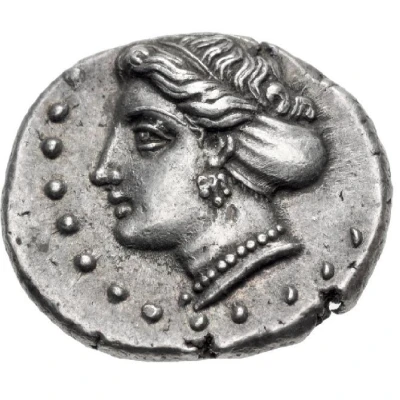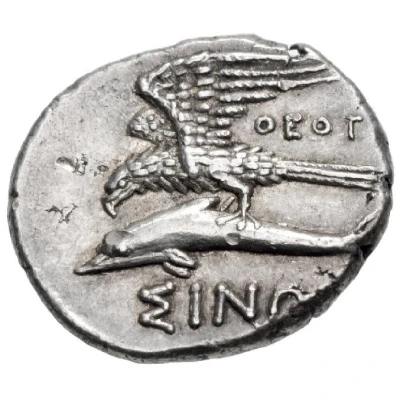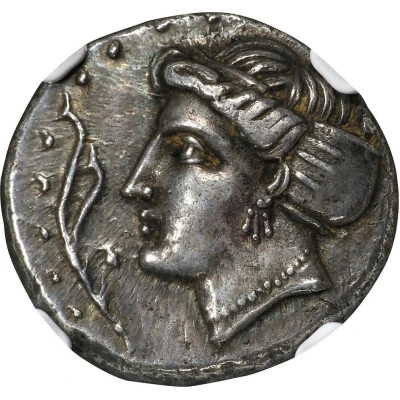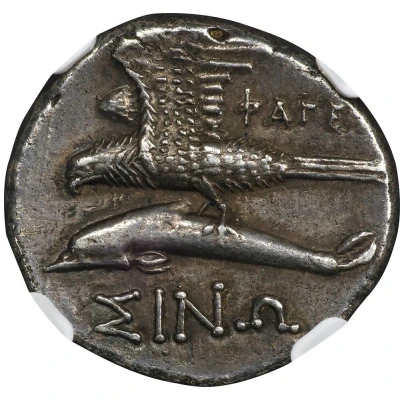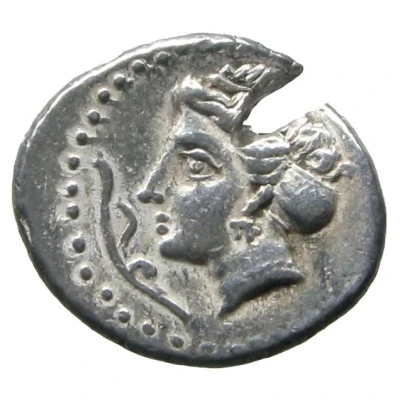
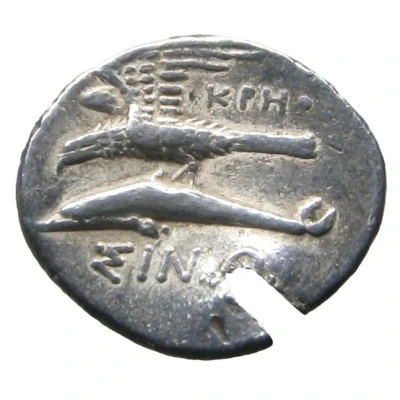

© PA-Engineer (CC0)
Drachm - KPHΘ Krethe 330 BC - 300 BC
| Silver | 5.8 g | 22 mm |
| Issuer | Sinope (Paphlagonia) |
|---|---|
| Type | Standard circulation coin |
| Years | 330 BC - 300 BC |
| Value | Drachm (1) |
| Currency | Drachm |
| Composition | Silver |
| Weight | 5.8 g |
| Diameter | 22 mm |
| Shape | Round (irregular) |
| Technique | Hammered |
| Orientation | Variable alignment ↺ |
| Demonetized | Yes |
| Updated | 2024-10-10 |
| Numista | N#328809 |
|---|---|
| Rarity index | 97% |
Reverse
Sea eagle on dolphin facing left with the name of the magistrate above the eagle.
Script: Greek
Lettering:
KPHΘ
ΣΙΝΩ
Translation:
Krethe (magistrate)
Sinope
Comment
This issue is relatively close in timing to the conquests of Alexander the Great as he marched across Anatolia taking territory from the Persians. Politically Paphlagonia enjoyed relative autonomy and even colonized around the Black Sea. The eagle might represent Paphlagonia and the dolphin in its grip might be a reference to Olbia, Sarmatia, on the northern coast of the Black Sea and which was subjected to invasions from city-states on the southern coast. Propaganda on coins is nothing new, what better way can you brag about conquests than to show it via symbols on your coinage.Interesting fact
The Drachm - KPHΘ (Krethe) coin from Sinope (Paphlagonia) was used as a form of currency in the ancient Greek city of Sinope during the 4th century BC. It was made of silver and weighed 5.8 grams, which was a significant amount for a coin at that time. The coin features an image of the goddess Athena on one side and an inscription of the city's name on the other. It's interesting to note that the coin's design and weight were influenced by the Persian Empire, which had conquered the region a century earlier. This coin is a rare example of a standardized currency used in the ancient Greek world and is highly sought after by collectors today.
